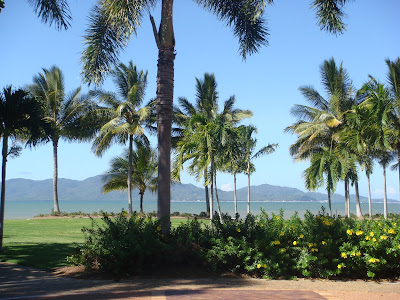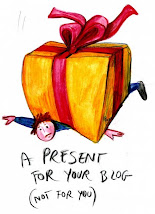
VIJAYADASHAMI
Vijayadashami is also known as Dussehra. It is celebrated in the lunar month of Ashwin (usually in September or October) from the Shukla Paksha Pratipada (the next of the New moon day of Bhadrapada) to the Dashami, or the tenth day of Ashwin.
In India, the harvest season begins at this time; and as mother earth is the source of all food, the Mother Goddess is invoked to start the new harvest season and to reactivate the vigor and fertility of the soil. This is done through religious performances and rituals which invoke cosmic forces that are believed to rejuvenate the soil.
On the day of Dussehra, statues of the Goddess Durga are submerged in the waters of the river. These statues are made with the clay and the pooja is performed with turmeric and other pooja items which are powerful disinfectants and mixed in the river waters. This makes water useful for the farmers and yields better crops.
 Dussehra is the festival of Victory of Good over Evil. Veda Vyasa is considered as the foremost Guru and Vijayadashami is also celebrated as Vyasa puja.
Dussehra is the festival of Victory of Good over Evil. Veda Vyasa is considered as the foremost Guru and Vijayadashami is also celebrated as Vyasa puja.
On this day in the Treta Yug, Shri Ram (7th incarnation of Vishnu), killed the great demon Ravana who had abducted Lord Ram's wife Sita to his kingdom of Lanka. Ram, along, with his brother Lakshman follower Hanuman and an army of monkeys fought a great battle to rescue his wife Sita. The war against Ravana lasted for ten days.
Rama had performed "Chandi Hom” and invoked the blessings of Durga to kill Ravana. Durga blessed Rama with the secret to kill Ravana. Ravana was defeated in his own kingdom of Lanka by Rama and the vanarsena.
 Rama with Sita and Laxman returned victorious to his kingdom of Ayodhya on the Ashwin Shukla dashami. This victory of Rama is since then celebrated as “Vijaya Dashami”. So also prior to the defeat of Ravana, when Rambhakt Shri Hanuman went to Lanka to search Sita, he found her on the day of Ashvin shukla dashami.
Rama with Sita and Laxman returned victorious to his kingdom of Ayodhya on the Ashwin Shukla dashami. This victory of Rama is since then celebrated as “Vijaya Dashami”. So also prior to the defeat of Ravana, when Rambhakt Shri Hanuman went to Lanka to search Sita, he found her on the day of Ashvin shukla dashami.
During these 10 days of Dussehra, huge idols of Ravana, Kumbhakarna (brother of Ravana) and Meghanad (son of Ravana) are erected and are set on fire during sunset.

This is among the most auspicious days in the Hindu calendar and comes as the finale of the nine-day festival, Navaraatri. This festival of victory is preceded by worship of Saraswati the Goddess of Learning and of Durgaa the Goddess of Strength. Grand processions of all Gods and Goddesses are taken out in every town and village on this day, signifying the victory of the forces of righteousness over those of wickedness. Various have been the names of the Goddess of Strength - Durgaa, Mahaa Kaali, Mahishasura Mardini etc., under which that supreme protectors of the good and the holy put to rout, time and again, the demoniac forces and established the supremacy of the righteous.
 Vijaya Dashami is resplendent with many an inspiring episode reflecting the victorious culmination of deeds of valour of our illustrious ancestors. The tradition in southern parts depicts Sri Rama's triumphant return to Ayodhya after fourteen years of banishment entailing endless hardships, dangers and mental anguish like separation from Sita and finally the slaying of Ravana, as coinciding with this day. Symbolic of the victorious occasion, Rama-Leela is observed with great enthusiasm in the northern parts.
Vijaya Dashami is resplendent with many an inspiring episode reflecting the victorious culmination of deeds of valour of our illustrious ancestors. The tradition in southern parts depicts Sri Rama's triumphant return to Ayodhya after fourteen years of banishment entailing endless hardships, dangers and mental anguish like separation from Sita and finally the slaying of Ravana, as coinciding with this day. Symbolic of the victorious occasion, Rama-Leela is observed with great enthusiasm in the northern parts.
In India, the harvest season begins at this time; and as mother earth is the source of all food, the Mother Goddess is invoked to start the new harvest season and to reactivate the vigor and fertility of the soil. This is done through religious performances and rituals which invoke cosmic forces that are believed to rejuvenate the soil.
On the day of Dussehra, statues of the Goddess Durga are submerged in the waters of the river. These statues are made with the clay and the pooja is performed with turmeric and other pooja items which are powerful disinfectants and mixed in the river waters. This makes water useful for the farmers and yields better crops.
 Dussehra is the festival of Victory of Good over Evil. Veda Vyasa is considered as the foremost Guru and Vijayadashami is also celebrated as Vyasa puja.
Dussehra is the festival of Victory of Good over Evil. Veda Vyasa is considered as the foremost Guru and Vijayadashami is also celebrated as Vyasa puja.On this day in the Treta Yug, Shri Ram (7th incarnation of Vishnu), killed the great demon Ravana who had abducted Lord Ram's wife Sita to his kingdom of Lanka. Ram, along, with his brother Lakshman follower Hanuman and an army of monkeys fought a great battle to rescue his wife Sita. The war against Ravana lasted for ten days.
Rama had performed "Chandi Hom” and invoked the blessings of Durga to kill Ravana. Durga blessed Rama with the secret to kill Ravana. Ravana was defeated in his own kingdom of Lanka by Rama and the vanarsena.
 Rama with Sita and Laxman returned victorious to his kingdom of Ayodhya on the Ashwin Shukla dashami. This victory of Rama is since then celebrated as “Vijaya Dashami”. So also prior to the defeat of Ravana, when Rambhakt Shri Hanuman went to Lanka to search Sita, he found her on the day of Ashvin shukla dashami.
Rama with Sita and Laxman returned victorious to his kingdom of Ayodhya on the Ashwin Shukla dashami. This victory of Rama is since then celebrated as “Vijaya Dashami”. So also prior to the defeat of Ravana, when Rambhakt Shri Hanuman went to Lanka to search Sita, he found her on the day of Ashvin shukla dashami.During these 10 days of Dussehra, huge idols of Ravana, Kumbhakarna (brother of Ravana) and Meghanad (son of Ravana) are erected and are set on fire during sunset.

This is among the most auspicious days in the Hindu calendar and comes as the finale of the nine-day festival, Navaraatri. This festival of victory is preceded by worship of Saraswati the Goddess of Learning and of Durgaa the Goddess of Strength. Grand processions of all Gods and Goddesses are taken out in every town and village on this day, signifying the victory of the forces of righteousness over those of wickedness. Various have been the names of the Goddess of Strength - Durgaa, Mahaa Kaali, Mahishasura Mardini etc., under which that supreme protectors of the good and the holy put to rout, time and again, the demoniac forces and established the supremacy of the righteous.
 Vijaya Dashami is resplendent with many an inspiring episode reflecting the victorious culmination of deeds of valour of our illustrious ancestors. The tradition in southern parts depicts Sri Rama's triumphant return to Ayodhya after fourteen years of banishment entailing endless hardships, dangers and mental anguish like separation from Sita and finally the slaying of Ravana, as coinciding with this day. Symbolic of the victorious occasion, Rama-Leela is observed with great enthusiasm in the northern parts.
Vijaya Dashami is resplendent with many an inspiring episode reflecting the victorious culmination of deeds of valour of our illustrious ancestors. The tradition in southern parts depicts Sri Rama's triumphant return to Ayodhya after fourteen years of banishment entailing endless hardships, dangers and mental anguish like separation from Sita and finally the slaying of Ravana, as coinciding with this day. Symbolic of the victorious occasion, Rama-Leela is observed with great enthusiasm in the northern parts.




























.JPG)















